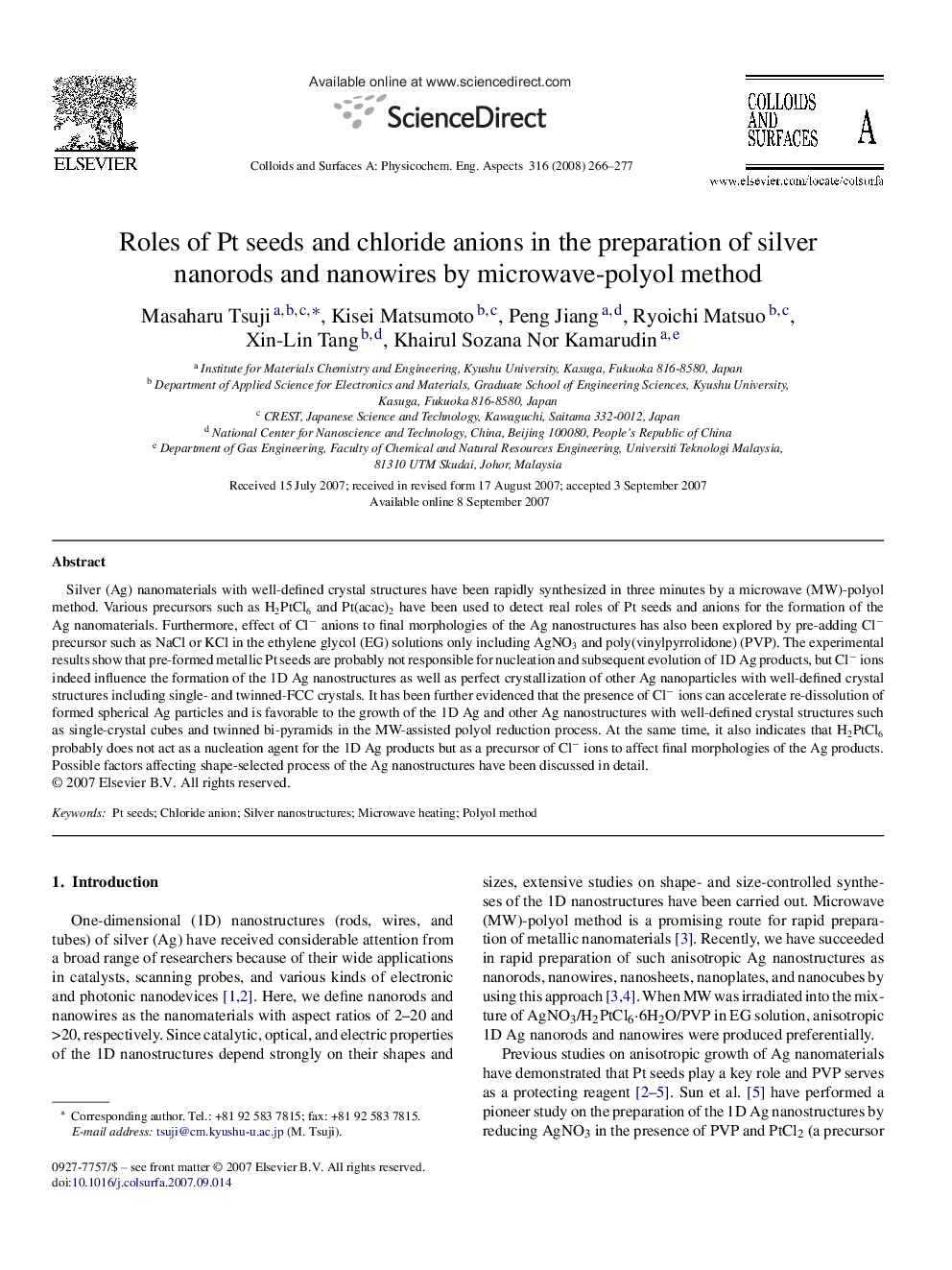| Article ID | Journal | Published Year | Pages | File Type |
|---|---|---|---|---|
| 597051 | Colloids and Surfaces A: Physicochemical and Engineering Aspects | 2008 | 12 Pages |
Abstract
Silver (Ag) nanomaterials with well-defined crystal structures have been rapidly synthesized in three minutes by a microwave (MW)-polyol method. Various precursors such as H2PtCl6 and Pt(acac)2 have been used to detect real roles of Pt seeds and anions for the formation of the Ag nanomaterials. Furthermore, effect of Clâ anions to final morphologies of the Ag nanostructures has also been explored by pre-adding Clâ precursor such as NaCl or KCl in the ethylene glycol (EG) solutions only including AgNO3 and poly(vinylpyrrolidone) (PVP). The experimental results show that pre-formed metallic Pt seeds are probably not responsible for nucleation and subsequent evolution of 1D Ag products, but Clâ ions indeed influence the formation of the 1D Ag nanostructures as well as perfect crystallization of other Ag nanoparticles with well-defined crystal structures including single- and twinned-FCC crystals. It has been further evidenced that the presence of Clâ ions can accelerate re-dissolution of formed spherical Ag particles and is favorable to the growth of the 1D Ag and other Ag nanostructures with well-defined crystal structures such as single-crystal cubes and twinned bi-pyramids in the MW-assisted polyol reduction process. At the same time, it also indicates that H2PtCl6 probably does not act as a nucleation agent for the 1D Ag products but as a precursor of Clâ ions to affect final morphologies of the Ag products. Possible factors affecting shape-selected process of the Ag nanostructures have been discussed in detail.
Related Topics
Physical Sciences and Engineering
Chemical Engineering
Colloid and Surface Chemistry
Authors
Masaharu Tsuji, Kisei Matsumoto, Peng Jiang, Ryoichi Matsuo, Xin-Lin Tang, Khairul Sozana Nor Kamarudin,
